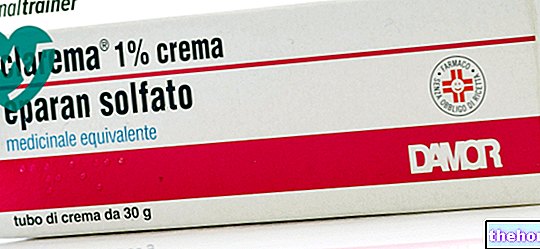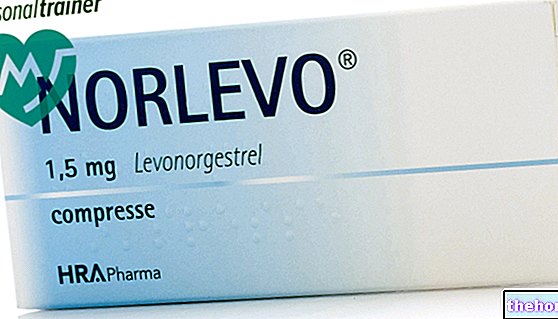Active ingredients: Oxatomide
Tinset Adult 30 mg tablets
Tinset package inserts are available for pack sizes:- Tinset Adult 30 mg tablets
- Tinset 25 mg / ml oral drops suspension
- Tinset 5% gel
Why is Tinset used? What is it for?
PHARMACOTHERAPEUTIC CATEGORY
Antihistamine for systemic use.
THERAPEUTIC INDICATIONS
Prevention and basic treatment of allergic diseases, mainly in cases of rhinitis, extrinsic asthma, follicular conjunctivitis, chronic urticaria, atopic dermatitis, food allergies.If necessary, TINSET can be combined with other medicinal products corresponding to these indications, provided that their mechanism of action differs from that of TINSET. TINSET is not indicated in the acute treatment of allergic conditions such as an asthma attack.
Contraindications When Tinset should not be used
Hypersensitivity to the active substance, to cinnarizine or to any of the excipients, liver failure.
Precautions for use What you need to know before taking Tinset
Do not consume alcoholic beverages and do not take medications that contain alcohol while taking Tinset.
Oxatomide, like other antihistamines, can interfere with skin allergy tests and therefore treatment should be stopped for at least 3 days before the skin test.
Interactions Which drugs or foods can modify the effect of Tinset
Tell your doctor or pharmacist if you have recently taken any other medicines, even those without a prescription.
Based on oxatomide metabolism studies, there may be a potential interaction between Oxatomide and CYP450 inhibitors, such as itraconazole, ketoconazole and cimetidine. Tinset may increase the sedative effect of CNS depressants, including alcohol, barbiturates, hypnotics. , narcotic analgesics, sedatives, anxiolytics and antipsychotics. Undesirable effects of anticholinergic drugs may be increased by concomitant administration of Tinset. The concomitant use of MAO inhibitors and Tinset is not recommended.
Warnings It is important to know that:
TINSET is not indicated in the acute treatment of allergic conditions such as asthma attack. When Tinset is prescribed to patients with asthma, the current drug treatment should not be stopped abruptly, but gradually reduced in dosage. This is especially true for patients being treated with corticosteroids. Cases of hepatitis, liver injury, jaundice and abnormal liver function (moderate to large increase in liver enzymes) have been reported, including very rare cases of fatal liver failure.
Patients should be carefully observed for hepatic side effects. In the event of abnormal liver function, appropriate measures such as discontinuation of treatment should be taken and therapy with Tinset should not be resumed.
Due to its hepatic elimination, caution should be exercised when prescribing oxatomide to patients with known liver disorders. If necessary, the treatment of these patients should preferably begin at half the normal dose. The interval between administrations can be maintained unchanged.
Dyskinesia and extrapyramidal symptoms have been observed in both adults and children. Extrapyramidal symptoms were more frequent in children.
In the geriatric population, age-related physiological changes (such as increased permeability of the blood-brain barrier and reduced hepatic metabolism) may influence the activity of H1 receptor antagonists. In the elderly, an increased risk of sedation must also be taken into account.
Pregnancy, breastfeeding and fertility
Ask your doctor or pharmacist for advice before taking any medicine.
The safety of Tinset in pregnant women has not been established. If it is necessary to administer Tinset during pregnancy, the potential risks should be carefully weighed against the expected therapeutic benefits.
There is insufficient information on oxatomide excretion in human milk. Therefore, in case of treatment with Tinset, breastfeeding should be stopped.
Effects on ability to drive and use machines
It is not recommended to drive or operate machinery while taking Tinset due to the possible occurrence of drowsiness and reduced alertness. A simultaneous intake of alcohol may potentiate these effects.
Important information about some of the excipients
The medicine contains lactose, in case of ascertained intolerance to sugars contact your doctor before taking the medicine.
Dosage and method of use How to use Tinset: Dosage
Adults
For each indication, 1 tablet twice a day; after breakfast and after dinner.
Attention
In order to avoid accidental overdose, strictly adhere to the recommended dosages.
Overdose What to do if you have taken too much Tinset
The most commonly reported symptoms after overdose are: somnolence, stupor and extrapyramidal symptoms such as dyskinesia, stiff neck, involuntary eye movements, dystonia and hypertonia.
Less common are hyperexcitability and agitation. More rarely, mydriasis and generalized muscle spasms and coma have been reported. After overdose, loss of consciousness and QT prolongation have been reported.
There are no specific antidotes. Treatment consists of close monitoring of vital signs and supportive measures. An ECG should be performed to evaluate the QT segment. If considered appropriate, activated charcoal may be given. Extrapyramidal symptoms have been successfully treated with anticholinergic agents.
In case of accidental ingestion / intake of an excessive dose of Tinset, notify your doctor immediately or go to the nearest hospital.
IF YOU HAVE ANY DOUBTS ABOUT USING TINSET, CONTACT YOUR DOCTOR OR PHARMACIST
Side Effects What are the side effects of Tinset
Like all medicines, TINSET can cause side effects, although not everybody gets them.
Undesirable effects that have been reported with the use of Tinset in both clinical trials and during marketing are listed below.
In common cases the following have been reported: Weight gain, drowsiness, fatigue, increased appetite.
Very common (may affect more than 1 in 10 people): sleepiness
Common (may affect up to 1 in 10 people): increased appetite, fatigue, headache, sedation, dry mouth, weight gain,)
Uncommon (may affect up to 1 in 100 people): appetite disturbance, nervousness, restlessness, irritability, insomnia, attention disturbance, dizziness, shortness of breath, nausea, vomiting, abdominal pain, upper abdominal pain , dyspepsia, constipation, chest discomfort, urinary retention, rash, urticaria
Very rare (may affect up to 1 in 1,000 people): haemolytic anemia, thrombocytopenia, leukopenia, agranulocytosis, anaphylactic shock, anaphylactic reactions, anaphylactoid reactions, hypersensitivity, decreased appetite, hallucinations, agitation, apathy, confusion, disorientation, nightmares , sleep disturbances, aggression, convulsions, decreased level of consciousness, loss of consciousness, stupor, lethargy, aphasia, paraesthesia, extrapyramidal disorders, coordination abnormal, dyskinesia, dysarthria, dysgeusia, hypertonia, hypotonia, opisthotonus, tremor, myoclonus, ataxia , dystonia, drowsiness, oculogyric crisis, blurred vision, double vision, abnormal dilation of the pupils, gaze paralysis, tinnitus, hearing loss, torsade de pointes, ventricular fibrillation, ventricular arrhythmia, ventricular extrasystole, arrhythmia, tachycardia, bradycardia, palpitations , flushing, hypotension, shock, nosebleeds, bronchial spasm, dry mucous membranes na salts, pharyngeal edema, gastroesophageal reflux, diarrhea, hepatic failure (fatal), fulminant hepatitis, cholestatic hepatitis, hepatitis, acute hepatitis, hepatocellular damage, hepatotoxicity, liver injury, cholestatic jaundice, jaundice, cholestasis, abnormal liver function, fatty liver , liver disorders, toxic epidermal necrolysis, Stevens-Johnson syndrome, toxic rash, erythema multiforme, erythema, angioedema, pruritus, erythematous rash, photosensitivity reactions, drug eruption, eczema, excessive sweating, muscle stiffness, muscle weakness, myalgia , stiff neck, trismus, dysuria, hematuria, chromaturia, gynaecomastia, galactorrhea, gait disturbance, malaise, hyperpyrexia, pyrexia, cold sensation, edema, abnormal sensations, prolongation of the QT tract of the electrocardiogram, abnormality of the electrocardiographic trace, abnormality of the liver function test, liver enzymes increased, alanine aminotransferase increased, increased aspartate aminotransferase increase, gamma glutamyl transferase increased, blood bilirubin increased, blood alkaline phosphatase increased, blood creatinine phosphokinase increased, blood lactate dehydrogenase increased, blood pressure decreased, heart rate increased
Pediatric patients
The adverse events listed in this "undesirable effects" section may also occur in the pediatric population.
Compliance with the instructions contained in the package leaflet reduces the risk of undesirable effects.
Reporting of side effects
If you get any side effects, talk to your doctor or pharmacist. This includes any possible side effects not listed in this leaflet. You can also report side effects directly via the national reporting system at https://www.aifa.gov.it/content/segnalazioni-reazioni-avverse. By reporting side effects you can help provide more information on safety. of this medicine.
Expiry and Retention
Expiry: see the expiry date printed on the package
The expiry date refers to the product in intact packaging, correctly stored.
Warning: do not use the medicine after the expiry date shown on the package
Medicines should not be disposed of via wastewater or household waste. Ask your pharmacist how to throw away medicines you no longer use. This will help protect the environment.
KEEP THE MEDICINAL PRODUCT OUT OF THE SIGHT AND REACH OF CHILDREN.
Composition and pharmaceutical form
COMPOSITION
One tablet contains:
active ingredient: oxatomide 30 mg; excipients: lactose, corn starch, microcrystalline cellulose, povidone, precipitated silica, magnesium stearate.
PHARMACEUTICAL FORM AND CONTENT
30 tablets of 30 mg.
Source Package Leaflet: AIFA (Italian Medicines Agency). Content published in January 2016. The information present may not be up-to-date.
To have access to the most up-to-date version, it is advisable to access the AIFA (Italian Medicines Agency) website. Disclaimer and useful information.
01.0 NAME OF THE MEDICINAL PRODUCT
TINSET
02.0 QUALITATIVE AND QUANTITATIVE COMPOSITION
TINSET Adult 30 mg tablets
One tablet contains: active ingredient Oxatomide 30 mg.
Excipients: lactose 120.09 mg
TINSET 25 mg / ml oral drops suspension
100 ml of suspension contain: active ingredient Oxatomide hydrate 2.6 g (equal to 2.5 g of oxatomide).
Excipients: methyl p-hydroxybenzoate 180 mg, propyl p-hydroxybenzoate 20 mg.
For the full list of excipients, see section 6.1.
03.0 PHARMACEUTICAL FORM
Tablets:
white, round, flat engraved with "30" on one side and the score line on the other.
Oral drops suspension:
white suspension.
04.0 CLINICAL INFORMATION
04.1 Therapeutic indications
Prevention and basic treatment of allergic diseases, mainly in cases of rhinitis, extrinsic asthma (excluding asthma attacks), follicular conjunctivitis, chronic urticaria, atopic dermatitis, food allergies. If necessary, TINSET can be combined with other medicines corresponding to these indications, provided that their mechanism of action differs from that of TINSET.
TINSET is not indicated for the acute treatment of allergic conditions such as asthma attack.
04.2 Posology and method of administration
TINSET Adult 30 mg tablets,
ADULTS: for each indication, 1 tablet, equal to 30 mg twice a day: after breakfast and after dinner.
TINSET 25 mg / ml oral drops suspension ADULTS: for each indication 30 drops, equal to 30 mg twice a day: after breakfast and after dinner.
CHILDREN aged 1 year or over: for each indication:
1 drop for every 2 kg of body weight, twice a day.
For pediatric subjects 1 year of age or older and with a body weight of less than 12 kg, such as for pediatric subjects with a body weight of more than 48 kg, the doctor should be consulted.
The number of drops to be given to the child should be calculated based on the child's body weight.
WARNING: An overdose can lead to serious undesirable effects especially in children, therefore it is necessary to strictly adhere to the recommended dose (see Section 4.9). In particular, as regards the use of the suspension in children, to avoid accidental overdose, the doses to be administered should be calculated in drops.
The product has a similar appearance to milk and therefore may attract the attention of children, which may increase the risk of overdose in children.
04.3 Contraindications
Hypersensitivity to the active substance, to cinnarizine, or to any of the excipients listed in section 6.1.
Contraindicated for use in children under the age of 1 year. Patients with hepatic insufficiency
04.4 Special warnings and appropriate precautions for use
TINSET is not indicated for the acute treatment of allergic conditions such as asthma attack.
When Tinset is prescribed to patients with asthma, ongoing drug treatment should not be stopped abruptly, but gradually reduced. This is especially true for patients being treated with corticosteroids.
In post-marketing experience, there have been reports of hepatitis, liver injury, jaundice and changes in hepatic function (moderate to large increase in liver enzymes), including very rare cases of fatal hepatic failure. Patients should be closely monitored. observed for hepatic side effects. In case of abnormal liver values, appropriate measures should be taken such as discontinuation of treatment and therapy with Tinset should not be resumed.
Due to its hepatic elimination, caution should be exercised when prescribing oxatomide to patients with known liver disorders. If necessary, treatment of these patients should preferably begin with doses that are half the normal dose. The interval between dosing can be maintained unchanged. .
Dyskinesia and extrapyramidal symptoms have been observed in both adults and children. Extrapyramidal symptoms were more frequent in children. Children are probably more susceptible to central nervous system effects due to immaturity of the blood-brain barrier. Therefore caution should be advised in children between 1 and 6 years of age and particularly those between 12 and 24 months. Tinset is contraindicated for use in children under the age of 1 year.
In the geriatric population, age-related physiological changes (such as increased permeability of the blood-brain barrier and decreased hepatic metabolism) can influence the activity of H1 receptor antagonists.
Follow the recommended doses as, especially in children, overdose of antihistamines can sometimes produce serious effects.
The tablets contain lactose, therefore patients with rare hereditary problems of galactose intolerance, the Lapp lactase deficiency or glucose-galactose malabsorption should not take this medicine.
The suspension oral drops contain para-hydroxybenzoates which can cause allergic reactions (including delayed ones).
Tinset should be administered with caution to elderly patients due to an increased risk of sedation.
Do not drink alcohol and do not take alcohol-containing drugs during therapy with Tinset (see section 4.5)
04.5 Interactions with other medicinal products and other forms of interaction
Oxatomide is metabolised by cytochrome P450, especially to iso 3A4 and potentially 2D6, according to in vitro studies on human liver microsomes.Based on in vitro studies, there may be a potential interaction between oxatomide and CYP 450 inhibitors such as itraconazole, ketoconazole and cimetidine.
Patients should be advised that Tinset may increase the sedative effect of central nervous system depressants, including alcohol, barbiturates, hypnotics, narcotic analgesics, sedatives, anxiolytics and antipsychotics (see section 4.7). Undesirable effects of anticholinergic drugs may be increased by concomitant administration of Tinset. The concomitant use of MAO inhibitors and Tinset is not recommended.
Oxatomide, like other antihistamines, can interfere with skin allergen tests and therefore, treatment should be stopped for at least 3 days before skin testing.
04.6 Pregnancy and breastfeeding
Pregnancy
No direct embryotoxic, peri and postnatal toxic effects were noted in animals. There were no direct adverse effects on fertility, while secondary effects were only recorded at maternally toxic dosages. Animal test data demonstrate limited passage of oxatomide across the placental barrier, but the safety of Tinset in pregnant women has not been established. If it is necessary to administer Tinset during pregnancy, the potential risks should be carefully weighed against the expected therapeutic benefits.
Feeding time
There is insufficient information on the excretion of oxatomide / metabolites in human milk. Therefore, in case of treatment with Tinset, breastfeeding should be discontinued.
04.7 Effects on ability to drive and use machines
Since the product can cause drowsiness and impair attention, those who have to drive vehicles or attend to operations requiring integrity of vigilance should be warned of this. A simultaneous intake of alcohol can potentiate these effects.
04.8 Undesirable effects
Data from clinical studies
The safety of Tinset was evaluated in 1188 patients (674 adults and 514 children), who participated in 17 clinical studies with Tinset (9 studies involved adults only, 5 children only and 3 both), with asthma, perennial allergies or seasonal including rhinitis, conjunctivitis, eczema, atopic and contact dermatitis, diabetes, chronic urticaria, drug allergy, food allergy, bronchitis or skin mastocytosis.
These patients took at least one dose of Tinset and safety data were obtained.
Patients were treated with Tinset for a planned period of 1 week to 15 months.
The frequency of adverse reactions is defined using the following convention:
Very common (≥1 / 10)
Common (≥1 / 100,
Uncommon (≥1 / 1,000 to
Rare (≥1 / 10,000,
Very rare (≤1 / 10,000)
Not known: frequency cannot be estimated from the available data.
Adverse reactions reported for ≥ 1% of patients treated with Tinset are listed in Table 1
Less frequent adverse reactions reported by
Post-marketing data
In addition to the adverse reactions reported in clinical trials and listed above, the following adverse reactions have been reported during post-marketing experience (Table 3).
Reporting of suspected adverse reactions
Reporting of suspected adverse reactions occurring after authorization of the medicinal product is important as it allows continuous monitoring of the benefit / risk balance of the medicinal product. Healthcare professionals are asked to report any suspected adverse reactions via the national reporting system. "Italian Medicines Agency Website: www.agenziafarmaco.gov.it/it/responsabili.
04.9 Overdose
Symptoms: The most commonly reported symptoms after an overdose are: somnolence, stupor and extrapyramidal symptoms such as dyskinesia, stiff neck, involuntary eye movements, dystonia and hypertonia. Less common are hyperexcitability and agitation. Mydriasis generalized muscle spasms and coma have been reported very rarely. Very rare cases of unconsciousness and prolongation of the QT interval have been reported after overdose.
Treatment: there are no specific antidotes. Treatment consists of close monitoring of vital signs and supportive measures. An ECG should be performed to evaluate the QT interval. If considered appropriate, activated charcoal may be given. Extrapyramidal symptoms have been successfully treated with anticholinergic agents.
05.0 PHARMACOLOGICAL PROPERTIES
05.1 Pharmacodynamic properties
Pharmacotherapeutic group: antihistamines for systemic and topical use.
ATC code: R06AE06 (tablets and drops) Oxatomide.
Oxatomide is an antiallergic drug that works by inhibiting the release and effects of various mediators.
Blocking or reduction of receptor mediated effects for stamina (H1), serotonin (5-HT1), leukotrienes (LTC3, LTC4) and platelet aggregation factor (PAF) is known. The onset and intensity of allergic reactions are further counteracted with oxatomide through the reduction of the release of mediators: Through the mobilization of calcium the mediators of the allergic reaction that are produced and stored by mast cells are secreted. This process is inhibited by the oxatomide.
At clinical doses, oxatomide does not exert pharmacological actions other than antiallergic ones.
05.2 Pharmacokinetic properties
In humans, the product is well absorbed after oral administration and reaches a blood peak within 2 hours. The half-life is approximately 14 hours and reaches steady state plasma values (approximately 35 ng / ml with doses of 30 mg twice per day), after 3 days. The plasma protein binding is approximately 98%. The majority of the dose, administered orally, is excreted metabolised with the faeces (60%) especially via the bile, including via the "urine and less than 0.5% of the dose is excreted unchanged. The main metabolic pathways are carried out by the liver through oxidative N-dealkylation, conjugation and aromatic hydroxylation.
05.3 Preclinical safety data
The toxicity potential of oxatomide was evaluated in a series of preclinical toxicology studies including acute and chronic toxicity, reproductive toxicity, genotoxicity, carcinogenesis and local (dermal and ocular) tolerability studies.
The oxatomide did not demonstrate genotoxic or carcinogenic potential in either mice or rats.
The drug had no effect on fertility in rats and did not demonstrate teratogenic potential in rats and rabbits. When administered to rats at maternally toxic doses, oxatomide demonstrated embryo-fetotoxic effects.
06.0 PHARMACEUTICAL INFORMATION
06.1 Excipients
30 mg tablets: lactose, corn starch, microcrystalline cellulose, povidone, precipitated silica, magnesium stearate.
25 mg / ml Oral drops suspension: microgranular cellulose and carmellose, povidone, polysorbate 20, methyl para-hydroxybenzoate, propyl para-hydroxybenzoate, sodium saccharin, purified water.
06.2 Incompatibility
There are no known physico-chemical incompatibilities of the oxatomide with other compounds.
06.3 Period of validity
TINSET Adult 30 mg tablets, TINSET 25 mg / ml oral drops, suspension: 5 years.
TINSET 25 mg / ml oral drops, suspension the medicine must be used within three months of first opening the bottle; after this period, the residual medicinal product must be discarded.
06.4 Special precautions for storage
This medicine does not require any special storage conditions.
06.5 Nature of the immediate packaging and contents of the package
TINSET Adult 30 mg tablets
PVC and aluminum blisters
packaging: 30 tablets
TINSET 25 mg / ml oral drops, suspension:
yellow glass bottle with polypropylene dropper and child resistant closure
packaging: 30 ml bottle
06.6 Instructions for use and handling
In order to avoid accidental overdose, strictly adhere to the recommended dosages; in particular, as regards the use of oral suspension drops in children, the doses to be administered must be calculated in drops and the bottle containing the suspension must be shaken vigorously and thoroughly before each use.
TINSET 25 mg / ml Oral drops, suspension: child resistant closure:
this type of closure is designed to make it difficult for a child to open the bottle. Remember that if the adult does not close the bottle properly following the instructions below, the cap is no longer child resistant.
• To open, push the plastic cap with the dropper down firmly, then unscrew.
• After sampling, to close it again, push the plastic cap with dropper firmly downwards and at the same time screw it back on.
• To make sure that the safety mechanism is properly triggered, turn the cap counterclockwise without pressing and check that the bottle cannot be opened.
Keep this medicine out of the reach and sight of children.
07.0 MARKETING AUTHORIZATION HOLDER
GRUNENTHAL ITALIA S.r.l. - Via Carlo Bo, 11 - 20143 Milan
08.0 MARKETING AUTHORIZATION NUMBER
TINSET Adult 30 mg tablets, 30 tablets - A.I.C. n. 025293010
TINSET 25 mg / ml oral drops suspension, bottle 30 ml - A.I.C. n. 025293034
09.0 DATE OF FIRST AUTHORIZATION OR RENEWAL OF THE AUTHORIZATION
February 2012
10.0 DATE OF REVISION OF THE TEXT
February 3, 2015




























